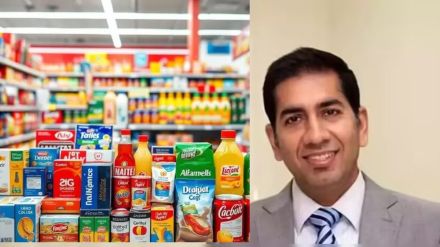Modern trade, which has shown signs of revival for the first time in four quarters, is projected to continue its growth momentum, driven by urban demand recovery. Besides an improvement in the urban consumption trends, the channel’s GST-readiness versus kiranas also aided the growth in modern trade seen in the September 2025 quarter, according to top FMCG executives and consumer intelligence firm NielsenIQ.
Analysts further say the revival will continue in future. “Organised retail was better prepared for the GST transition in September versus kiranas. This was visible in pricing changes on products, point of sale machines which were upgraded; sales staff who were up-to-speed on labelling changes. There was also greater coordination with companies on inventory management,” Mohit Malhotra, CEO, Dabur India, said.
He added that he sees modern trade building on these gains in the coming quarters as sentiment improves on the back of GST cuts and a shift from unbranded to branded products. Volume growth for modern trade, which contributes around 11% of domestic fast-moving consumer goods (FMCG) sales, came in at 4.2% in the September 2025 quarter, after declining 1.7% and 4.3%, respectively, in the December 2024 and March 2025 quarters, NielsenIQ data showed. The April-June period was flat at 0.2%.
In the September quarter, volume growth for traditional trade, which contributes 84% to domestic FMCG sales, slipped to 5.6% versus 7.2%, 6.1% and 6.5%, seen in the December 2024, March 2025 and June 2025 quarters, respectively.
Large grocery chains such as Reliance Retail’s Smart Bazaar and DMart had indicated that they would pass on the reduced GST rates to consumers from September 22 to ensure the impact of transition was minimal.
Kiranas, on the other hand, struggled with pre-GST stock after the implementation date kicked in, saying that they could not pass on gains till their existing inventory was not exhausted. These trade challenges continued into October as well.
NielsenIQ pointed out that modern trade’s recovery also comes amid e-commerce’s sustained growth in urban areas, implying organised trade is now rewiring its strategy to deal with the online onslaught, especially from quick commerce.
In the September quarter, for instance, e-commerce grew from 4% to 5% in terms of overall channel share, led by growth mostly in metropolitan cities that have been pivoting to convenience led by quick commerce. In smaller cities, offline retail remains stronger since q-commerce has not penetrated these markets yet, retail experts said.
Sharang Pant, head of customer access, FMCG, NielsenIQ, said that the urban recovery in the September quarter was led by small towns and by a combination of monetary and fiscal policy measures, which put more money in the hands of people. Metro cities, he said, have shown a stronger affinity for e-commerce, though retail experts said that grocery retailers are using a combination of tactics to stay relevant in urban areas.
For instance, grocery retailers such as Reliance Retail, DMart and Spencer’s Retail are pushing their own quick commerce operations using their network of stores in the top metros to address convenience and doorstep delivery. In smaller towns and cities, these chains are opting to put up more stores to ensure consumers can benefit first-hand from an offline store experience as disposable incomes improve and consumers demand a better shopping experience.
Both Reliance Retail and DMart, which are the country’s top two organised retailers, have said they will continue with this dual strategy in the future.
